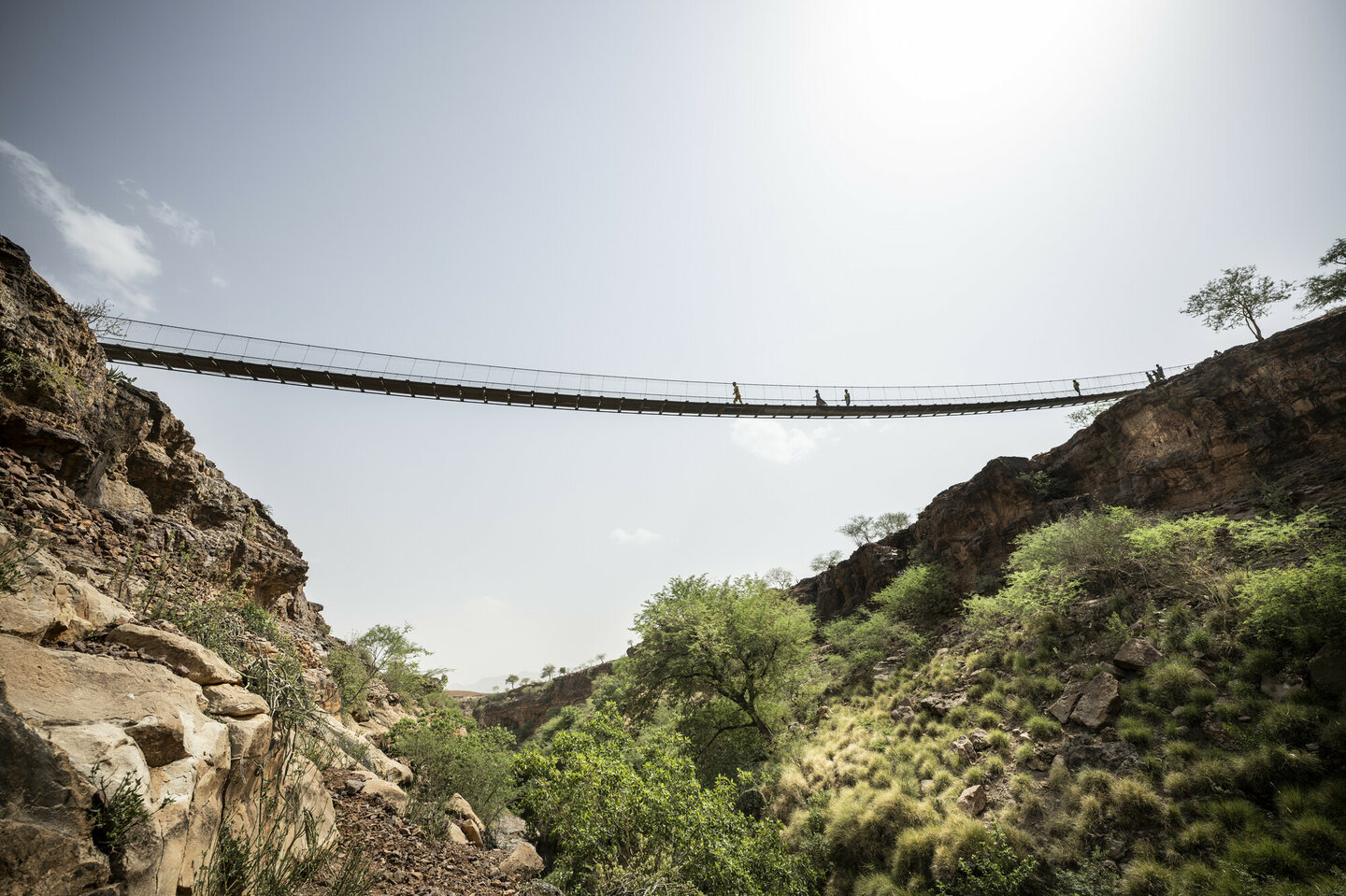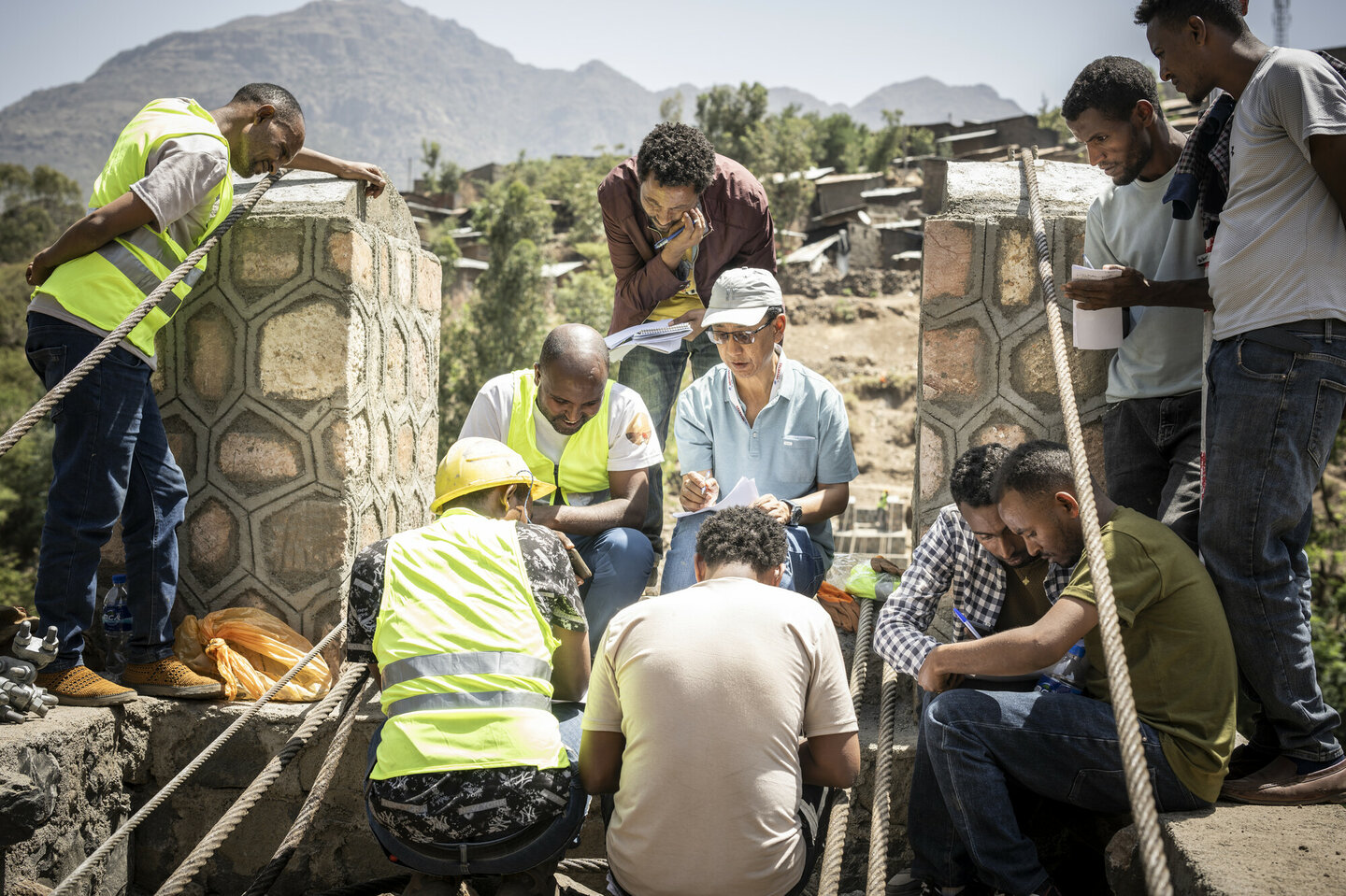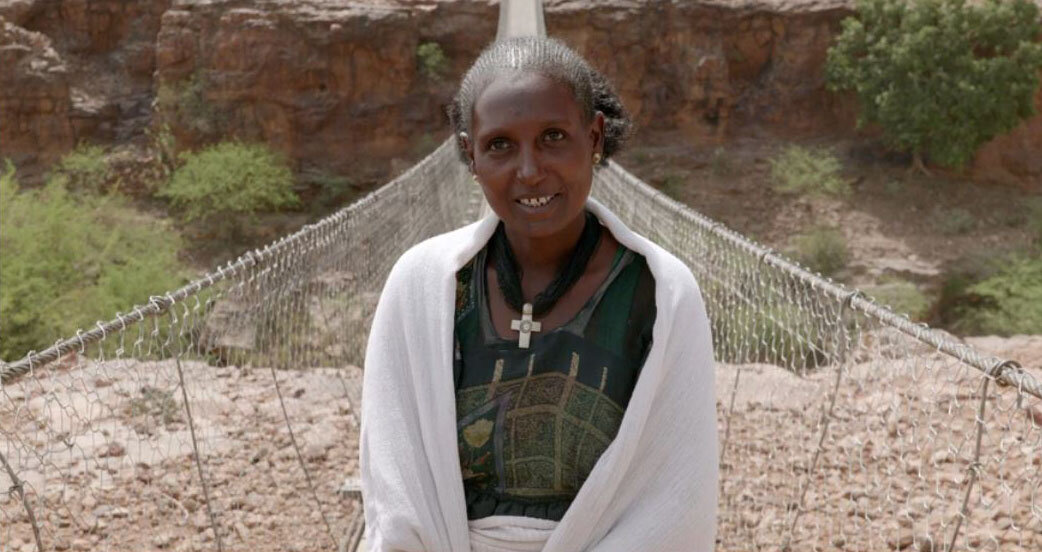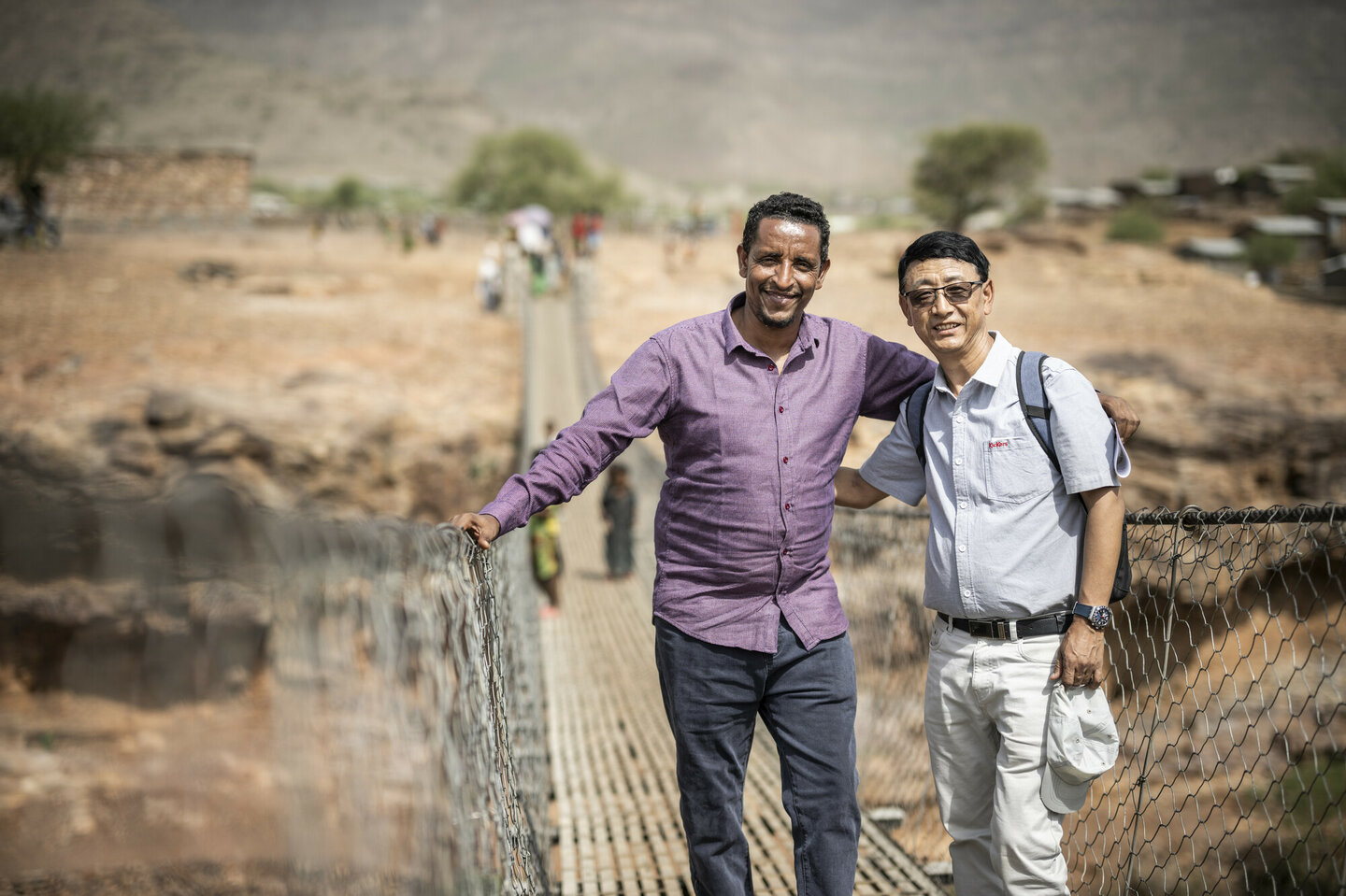Pasang Sherpa from Nepal knows from his own experience how important bridges are. He trained as a bridge builder with a Swiss organization and has since been improving lives not only in his home country, but also in Africa.
This article was originally published in German on the Swiss online news site watson.
What do Nepal and Ethiopia have in common? They are both located in the Global South, are developing countries and are both crisscrossed by many gorges and rivers that are almost impossible to cross without bridges. What connects them? Bridges. Both literally and figuratively.
This is the story of a project that not only connects villages, but also people and cultures, and shows how poverty is being combated with Swiss support.
Ethiopia - the rugged country
The East African country with 123 million inhabitants is characterized by a diverse and rugged topography. The plateaus and mountains in particular are crisscrossed by deep gorges that turn into raging rivers during the rainy season.

What is beautiful to the eye is a major challenge for local, rural residents’ everyday lives. Many gorges cannot be crossed at all, only during the dry season or only through long and arduous detours.
This is also the case in Ziquala, in the Amhara region of northern Ethiopia, where 33-year-old Genet Kessie lives with her six children.
She has a small business where she brews her own beer, among other things. Until recently, in order to sell beer at the market she had to either cross a deep ravine or take a long detour to the nearest bridge during the rainy season. Her six children faced the same challenge on their way to school.
These are problems that Nepalese bridge engineer Pasang Sherpa knows only too well. In his home country, he and his colleagues have perfected a solution over the past decades.
Expertise from Nepal
One of the reasons for the Nepalese expertise is Swiss support: The Swiss aid organization Helvetas was involved in the construction of suspension bridges in Nepal starting in 1960, and the Swiss Agency for Development and Cooperation (SDC) joined in 1972. Thanks to this support, over 10,000 bridges have been built in the Asian country since the 1960s, making rural villages accessible. Nineteen million now people benefit from the bridges that have been built, stimulating overall regional growth.
SDC
The Swiss Agency for Development and Cooperation (SDC) was founded in 1961 and is responsible for implementing Switzerland's foreign policy strategy in the areas of humanitarian aid and global and regional development cooperation.
Helvetas
Helvetas is an independent Swiss organization for development cooperation and humanitarian aid that has been helping disadvantaged people since 1955. It is active in over 30 of the poorest countries in Africa, Asia, Latin America and Eastern Europe. The organization has been working in Nepal for almost seventy years and has over 200 local employees.
The project was a success: Last year, Helvetas and the SDC handed over the reins completely to the Nepalese government, which is now continuing to build bridges independently.
But the bridge project was not limited to Nepal: Helvetas set up the South-South Cooperation Unit (SSCU) in 2009 to pass on its knowledge and experience beyond Nepal's borders. Nepalese expertise is helping facilitate access to rural areas for millions of people in other countries in the Global South.

How Pasang Sherpa became a bridge builder
One of the first Nepalese bridge engineers in Ethiopia was Pasang Sherpa. The Nepalese has been working in the bridge construction sector for 26 years.
Pasang grew up in the Solukhumbu district in eastern Nepal with three brothers and four sisters. He became a bridge builder through personal experience, as he explained to watson: His father, who worked as a cook, always had to cross a large river – the Solu Khola – on his way to work. This could only be crossed via a wooden bridge without railings. “We were very worried every time he had to cross this bridge,” said Pasang.
His father worked hard and often only came home late at night. He and his family would sometimes spend hours looking through the windows for him, anxiously awaiting his arrival. This was such a formative experience for young Pasang that even then he resolved to study engineering so that one day he could build a safe bridge over the Solu Khola.

After completing his studies, Pasang trained as a bridge builder with Helvetas in 1996. Since then, he has built dozens of bridges in Nepal and achieved the goal he set himself as a child: A stable, safe bridge now crosses the Solu Khola.
When Pasang heard that Helvetas was sending Nepalese engineers abroad as part of the SSCU, he got in touch. In 2009, he traveled to Ethiopia for the first time and has since spent several months a year there to support the construction of various bridges.

Hard work that pays off
Bridge building is associated with similar challenges in both Nepal and Ethiopia. Construction materials for the bridges often have to be transported over long distances, says Pasang. The work is hard, but the local population lends a hand. For example, they form long human chains to carry steel cables weighing several tons to the construction site.
“When a bridge is finished, I not only feel a great sense of satisfaction, but I am also impressed by how the people have worked on the bridge and overcome all the difficulties,” said Pasang. “When I see how happy and satisfied people are about the bridges, it makes me sentimental.”
You can hear the pride in Pasang’s voice when he speaks. “When I see a completed bridge, I also realize: This is something I have done. I have supported a community that was previously isolated.”


Thanks to the bridges, people can finally reach their destinations on time, Pasang said. Children are at school on time, farmers can sell their harvested fruit before it starts to rot and pregnant women or sick people can reach the hospital quickly in emergencies. Pasang emphasizes: “The bridge also saves lives.”
Why cultural bridges are also built
Building bridges in Ethiopia goes far beyond the technical exchange of knowledge. Pasang is also interested in cultural and social exchange. His Ethiopian colleague Sewnet Assegu can confirm this. Pasang now speaks good Amharic – one of Ethiopia's official languages – and has become part of the Ethiopian community. The two say that Pasang is practically part of Sewnet's family; he is invited to weddings and has been given the Amharic name “Maru,” which translates as “sweet honey.”

A few weeks ago, Pasang was back in Ethiopia and saw his friend Sewnet again. Together they visited two bridges in the Amhara region: the bridge in Ziquala, which was completed last year, and the bridge in Goja, which was still under construction at the time. The first bridge is used by 2,000 households, the second bridge by 9,000 to 10,000 households.
The ongoing Nepalese support in Ethiopia since 2009 is paying off: More and more local contractors and consultants are becoming bridge experts like Pasang. And more and more people in Ethiopia can avoid dangerous gorge crossings and time-consuming detours.
Pasang Sherpa probably never dreamed that he would one day build bridges not only in his home village, but also in villages across national borders – and find a second family on the African continent in the process.
This article was originally published in German on the Swiss online news site watson.


